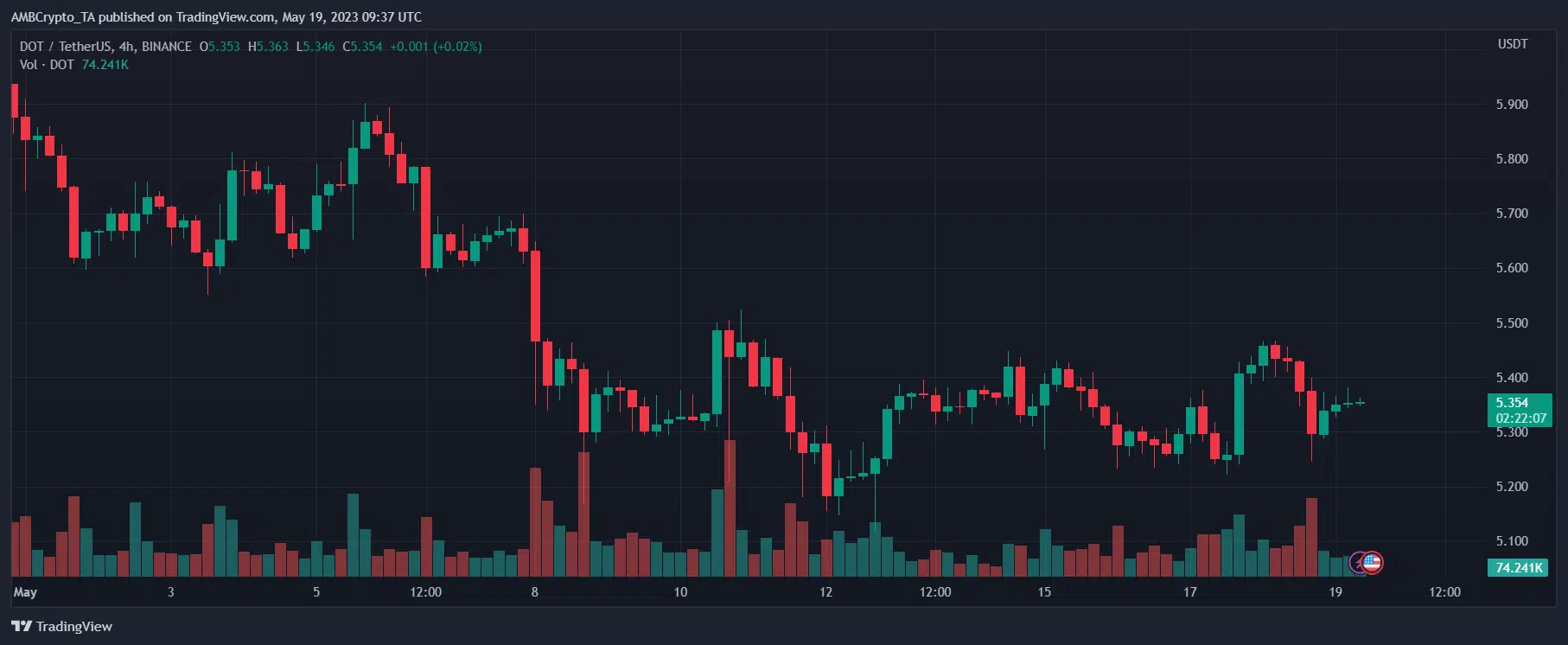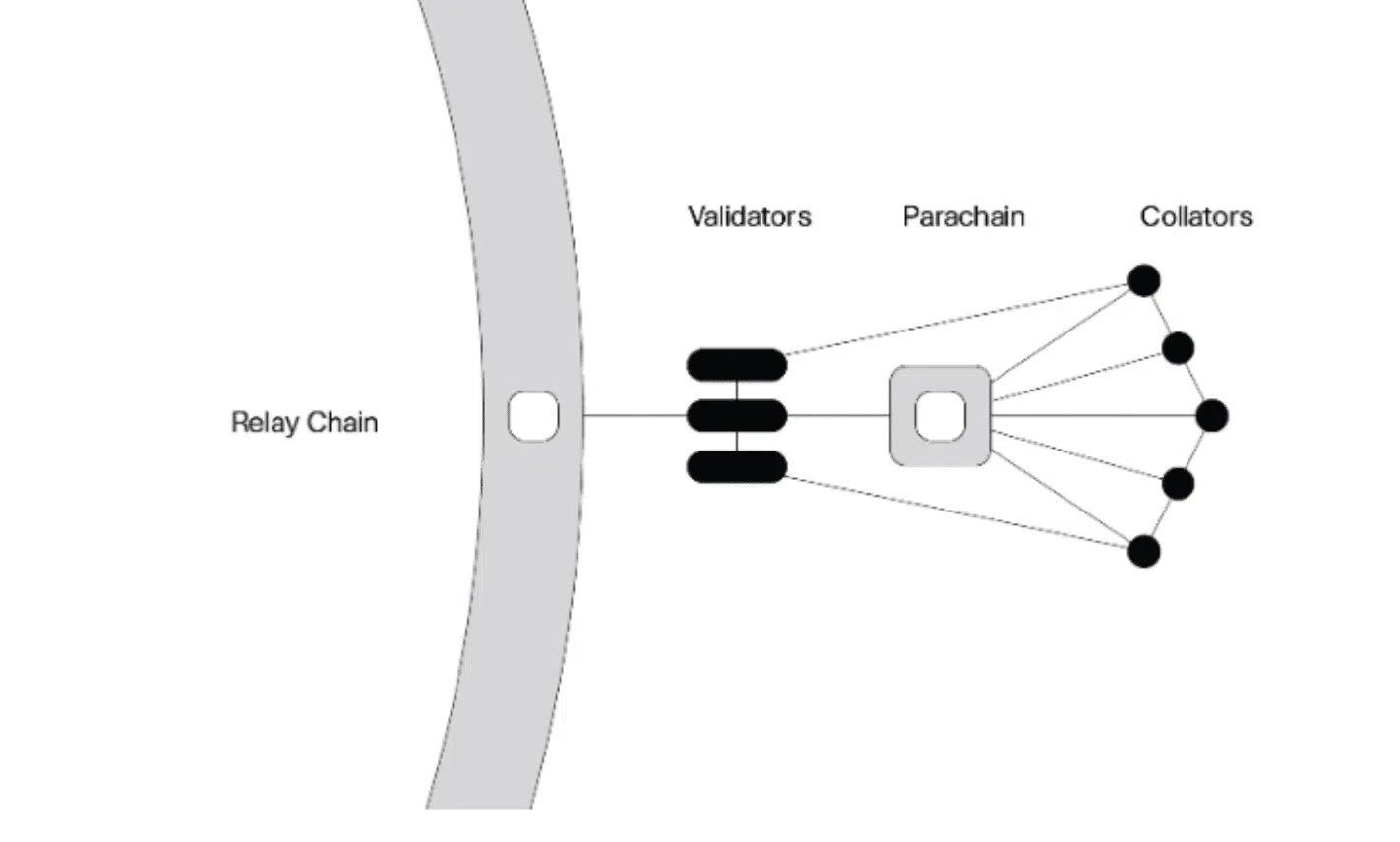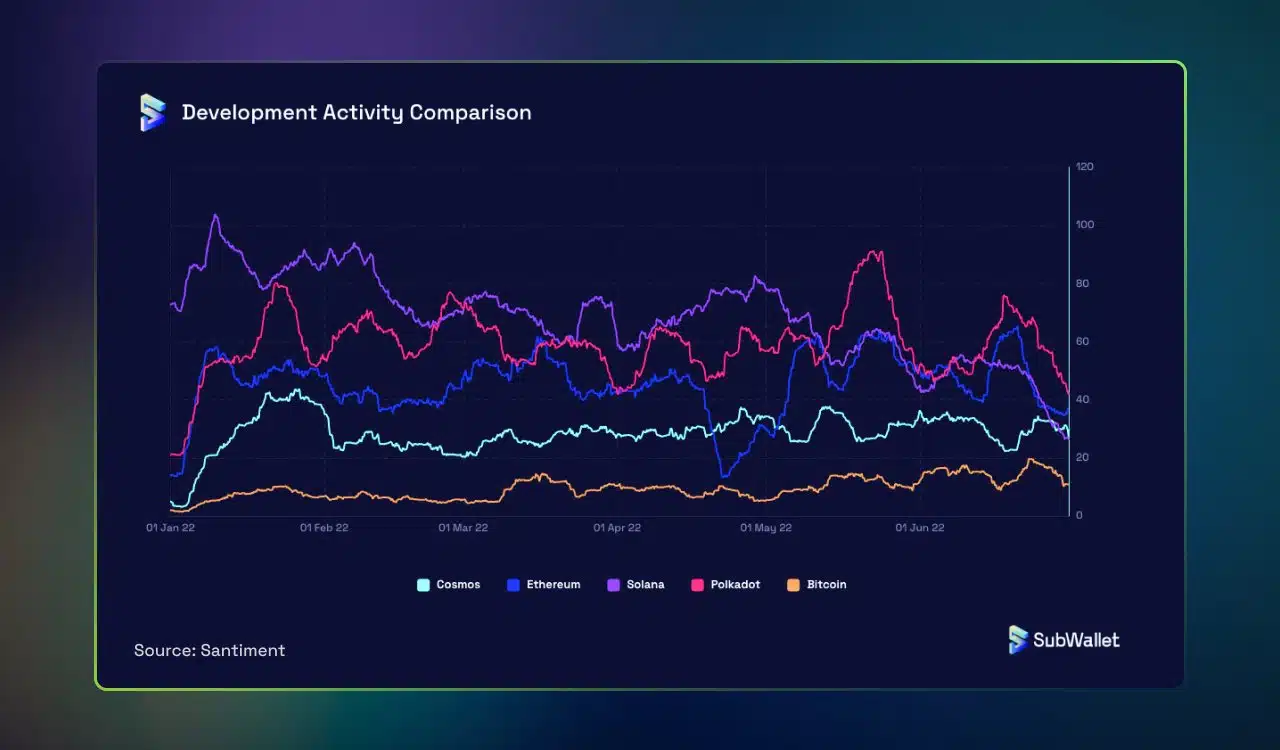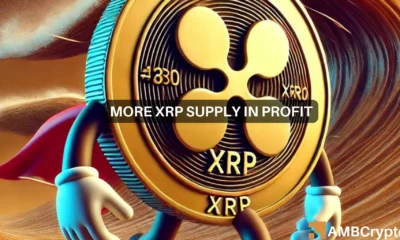Polkadot Price Prediction 2025-2030: Has DOT hit a rough patch? Analyzing…

Disclaimer: The datasets shared in the following article have been compiled from a set of online resources and do not reflect AMBCrypto’s own research on the subject.
Polkadot recently posted its weekly roundup on Twitter, highlighting the most notable developments in its ecosystem.
Moonbeam, Polkadot’s parachain announced an XCM integration with Equilibrium; this would bring Multichain assets to Equilibrium.
Besides, apps on SubsocialChain can now be used without a wallet, tokens, or constant confirmations.
Though the Polkadot network anticipates many important developments, the DOT token is at the same price level as it was a week before. At press time, DOT was trading at $5.3.
Read Price Prediction for Polkadot [DOT] for 2023-24
In a blog post published on 26 September 2022, the Polkadot team provided updates on their Roadmap Roundup.
The post described the Asynchronous Backing which aims to accomplish three things: reduce the duration of parachain blocks to six seconds, increase the amount of block space available to each block by a factor of 5-10, and allow parachain blocks to be reused when they don’t make it onto the relay chain on the first try.
The same is just more evidence of the consistent level of development activity around the project. For instance, on 21 November, Bifrost announced liquid staking via a Polkadot blockchain on Twitter.
We're happy to announce that $vGLMR & $vMOVR liquid staking is Live on Bifrost!?
Thanks to the @Polkadot #HRMP channel and the yield-bearing vToken derivatives, @MoonbeamNetwork & @MoonriverNW community can enjoy increased token liquidity and rewards:https://t.co/15mSRH8BpR
?— Bifrost – Omnichain LSD (@BifrostFinance) November 21, 2022
The transactions per second (TPS) capacity of the network is also expected to increase in aggregate to 100,000-1,000,000, thanks to the update.
Prior to its launch, the Polkadot project had raised over $144.3 million through the Web3 Foundation in an ICO itself in October 2017. DOT was trading at $6.30 in August 2020 and kept oscillating between $4 and $5 throughout the rest of 2020.
The crypto bloom of 2021 proved to be wondrous for Polkadot too. Throughout the year, it remained bullish and reached its ATH of $55 in November. Similarly, the crypto crash witnessed in the second quarter of 2022 impacted its performance adversely. By mid-July, it was trading at just a little above $6.
At press time, DOT was trading at $5.3 with a market cap of $6.2 billion. Its 24-hour daily trading volume was $96 million, making it the 13th largest cryptocurrency in the world.
A proof-of-stake (PoS) blockchain, Polkadot recently upgraded to the v9270 version, which was reflected in some upward movement in its price. A few days back, its performance was rather resurgent. But with the Merge, Ethereum has emerged as a serious competitor of Polkadot as an alternative PoS blockchain and DOT’s price has been plunging since.
Polkadot Co-Founder Robert Habermeier, however, claimed that he was happy to see Ethereum transition from PoW to PoS mechanism. In fact, he viewed Polkadot as an “ETH collaborator.”
In December 2021, the largest telecommunication company in Europe, Deutsche Telekom, bought a large amount of DOT tokens. T-Systems Multimedia Solutions, its subsidiary, has also bought a large amount of DOT tokens to help groups staking on the Polkadot network.
Working on the proof-of-stake consensus mechanism is unique in supporting multiple interconnected chains, helping it earn a large number of users.
Shawn Tabrizi, the lead developer at Polkadot network, talked about the possibility of “a cohesive, multi-blockchain future” during an interview in February 2022. He also stressed the need to preserve the fundamentals of data privacy in the Polkadot ecosystem.
The Polkadot infrastructure supports two kinds of blockchains, relay chains, and parachains.
The central blockchain of the Polkadot infrastructure is the Relay Chain, where validators provide consensus for a transaction. The Relay Chain is built in a way to coordinate the management and operation of the whole Polkadot infrastructure, with minimal functionality in regard to other applications.
A parachain, on the other hand, is an application-specific chain on the Polkadot infrastructure that is validated by the validators of the Relay Chain itself. Since these chains run parallel to the Relay Chain, they are called parachains. It is here that developers can develop both applications and their own blockchains.
All of these parachains can communicate with each other on the network. In short, this cross-chain technology facilitates the transfer of both assets and data across blockchains. Users, therefore, don’t have to depend on a particular system for all of their cryptocurrency transactions.
Polkadot parachains can easily communicate with other blockchains existing on Ethereum and Bitcoin networks. The blockchain also provides better control, flexibility, and security, reducing the risk to its miners due to unauthorized validators. Acala, Moonbeam, Clover, Astar, and Parallel are some of the oldest projects running on the Polkadot network. The blockchain is growing rapidly and seems to promise a reliable future to its users.
Wood believes that from a Web 3.0 perspective, the inter-chain blockchain protocol of a network like Polkadot will connect different technological threads into a single economy and movement.
The ability to communicate without the need to trust each other is the cornerstone of the Polkadot system. The parachain auctions of Polkadot can truly build a democratic internet space as decentralized or distributed network architectures form the infrastructure of the online world.
In May last year, a Polkadot upgrade enabled parachain-to-parachain messaging over XCM. The XCM format is aimed at helping the Polkadot network become a fully interoperable multichain ecosystem. XCM allows communication not only between the parachains themselves but also between smart contracts and decentralized applications.
As a blockchain running on the PoS consensus mechanism, Polkadot is one of the most eco-friendly blockchain cryptocurrencies.
The PoS method is more sustainable than the PoW method as there is no race to mint more coins.
As per a new study by the Traders of Crypto, Polkadot, along with Cardano and Algorand, are among the most environment-friendly cryptocurrencies. With annual CO2 emissions of 50 tonnes, Polkadot is the fourth most eco-friendly cryptocurrency.
For eco-conscious investors, Polkadot has remained the preferred option for years and continues to be.
The ongoing Russia-Ukraine conflict had a devastating effect on the international community. The crisis abetted the crash of the cryptocurrency industry, but industry leaders and hundreds of others nonetheless came together to support Ukraine in her moment of vulnerability. In May 2022, Polkadot co-founder Gavin Wood donated 298,367 DOT worth $5.8 million to Ukraine.
The contribution of the crypto community has also been acknowledged by Mykhailo Fedorov, Vice Prime Minister of Ukraine. On 17 August 2022, he tweeted that $54 million from these funds has been spent on military gear, including rifle scopes, vests, helmets, and tactical backpacks.
A Forbes report published in 2022 quotes Bilal Hammoud, CEO, and founder of National Digital Asset Exchange, “Polkadot’s mission is to securely allow Bitcoin and Ethereum to interact with each other in a scalable manner… Imagine if you store your wealth in Bitcoin and use that Bitcoin on an Ethereum dApp [decentralized application] to take out a loan for a house quickly and securely.”
The interoperability and scalability of the Polkadot infrastructure have helped it endear itself to a lot of enthusiastic developers, thereby significantly raising the value of DOT.
Why these projections matter
Among all the market’s leading cryptocurrencies, what is peculiar to Polkadot is that it offers an opportunity to users to operate and transact across blockchains. With a circulating supply of 1.17 billion DOTs, Polkadot is the 12th largest cryptocurrency in the market today.
This also makes DOT one of the most closely observed cryptocurrencies in the market. Ergo, it is critical investors and holders remain aware of what popular analysts have to say about the future of DOT.
In this article, we will briefly summarize the key performance metrics of DOT such as price and market cap. Thereafter, we will observe what the most popular crypto-market analysts have to say about the current and future states of DOT, along with its Fear & Greed Index. We will also present metric charts to complement these observations.
Polkadot’s Price, Market Cap, and everything in between
Polkadot performed very well during the crypto-bloom of 2021, crossing the price level of $20 in early February and $30 in mid-February. It breached the $40-mark in early April and kept going up and down for the next few months. After going through a rough patch, it hit an ATH of $55 in early November.
The last month of 2021 was a difficult period for the entire cryptocurrency market. Things were no different for Polkadot, with DOT trading at just a little above $26 on 31 December.
Come 2022 and the Russia-Ukraine crisis further pushed the market into chaos. In January-February, DOT was trading at around $18-20. It was thought that the Ukrainian government’s decision in March to accept donations in DOT would improve its prospects. Alas, it hardly made any difference, as it was only in early April that it crossed the price mark of $23.
In May 2022, the collapse of both LUNA and TerraUSD sent shockwaves across the entire cryptocurrency industry. In fact, on 12 May, DOT’s price plummeted to $7.32. June and July also remained dismal for the entire cryptocurrency market, with DOT dipping to as low as $6.09 on 13 July. The news of the Japanese crypto-exchange Bitbank listing Polkadot on its platform in early August brought some respite, though.
Polkadot has also been scoring on other fronts. For instance, look no further than Messari’s latest Q4 2022 report. The report reveals an increase in their daily active accounts by 64%, while new accounts jumped by 49% in Q4 of 2022. The circulating supply slightly increased, while the circulating market cap noted a small drop.
Similarly, developer activity has been positive for Polkadot too. In May and June, for instance, it had the highest dev count. Over the course of 2022, the same for Polkadot has been second only to Solana.
Understandably, the market capitalization of Polkadot also mirrored the sentiment of the market. 2021 remained a blessed year for cryptocurrency, with its market cap soaring to nearly $45 billion in mid-May. However, the mayhem of the second quarter of 2022 crippled the Polkadot ecosystem. Its current market cap is $6.3 billion.
Polkadot’s 2025 predictions
We must first understand that the predictions of different analysts and platforms can widely vary and predictions can more often than not be proven wrong. Different analysts focus on different sets of metrics to arrive at their conclusions and none of them can predict unforeseen political-economic factors impacting the market. Now that we have understood this, let’s look at how different analysts predict the future of Polkadot in 2025.
Changelly predicts a slightly optimistic projection of Polkadot in 2025. According to Changelly, the maximum and minimum prices of DOT in 2025 will be $22.06 and $18.58. Its average trading cost will be $19.09.
DigitalCoinPrice predicts the minimum and maximum prices of DOT in 2025 to be $15.61 and $18.44. On average, it will be traded at $17.17 in 2025, it predicts.
A Bloomberg news story published in February 2022 revealed that according to a Crypto Carbon Ratings Institute study, Polkadot has the lowest total electricity consumption and total carbon emissions per year of the six so-called proof-of-stake blockchains. In fact, it only consumes 6.6 times the annual electricity consumption of an average American household.
Given the high-decibel conversations around the energy usage of cryptocurrencies, Polkadot’s energy efficiency is likely to attract the attention of customers.
Polkadot’s 2030 predictions
The aforementioned Changelly blogpost is very bullish in its assessment of Polkadot’s performance in 2030. It argues that as per experts, Polkadot will be traded for at least $126.69 in 2030, with its maximum possible price being $147.24. Its average price in 2030 will be $131.03, it predicts.
DigitalCoinPrice has a comparatively moderate projection of Polkadot, predicting that its average price in 2030 will be $54.47. Its minimum and maximum prices in 2030 will be $51.61 and $55.55.
Here, it is worth highlighting that predicting a market 8 years down the line is difficult. Ergo, investors should conduct their own research before investing and be wary of caveats attached to popular projections. Especially since right now, despite DOT’s recent rallies, the technicals for the altcoin aren’t all bullish. In fact, safety first might be the best option right now.

Source: TradingView
The Fear and Greed Index was flashing a ‘fear’ signal at press time.
Conclusion
Although DOT has witnessed bullish runs at intervals, its price movement remains very unpredictable. Though its announcement of it not being a security elicited a positive market reception, it didn’t last long due to the ongoing squabble regarding FTX. Investors should be alert for any sudden changes in attitude, though the market is still unpredictable.
In comparison to other blockchains, Polkadot offers more power to its token holders, such as the roles of nominators, collators, and fishermen, besides that of validators. In short, DOT holders can not only mine the currency but be active participants in the blockchain in other capacities as well. This feature puts Polkadot above other PoS blockchains in the race.
Over the years, Polkadot has attracted investments from a number of venture organizations such as Arrington ARP Capital, BlockAsset Ventures, Blockchain Capital, and CoinFund. At one point in time, even Three Arrows Capital had also invested a significant amount in the venture.
An ambitious venture, Polkadot intends to compete with Ethereum. Though its interoperability has the potential to attract a lot of projects, only a small number of them have come aboard the network. Notwithstanding the reputation of Ethereum, Polkadot is a relatively new venture and can perform better in upcoming years given it is able to attract larger projects. Its efficiency and scalability should come in handy in this endeavour.
Polkadot limits the number of parachains it can support to around 100. Since the supply is limited, parachains are allocated through auction, governance system, or parachains.
Only recently, the Kylin network became the winner of the 25th parachain auction on the Polkadot network, making a huge stride in the direction of Web 3.0 and DeFi development. Kylin won the offer with a bid of around 150,000 DOT.
The Web3 Foundation even today uses the proceeds from the sale of DOT tokens to support initiatives and projects being built on the Polkadot network. This foundation is governed by the Foundation Council, consisting of Dr. Gavin Wood, Founder-President, Vice President Dr. Aeron Buchanan and Reto Trinkler. The support provided to the network by such a reputed organization speaks volumes about the trust put in the future of the Polkadot blockchain network.
Only recently, Web3 Foundation, in association with the online education platform edX, launched a course on cryptocurrency, Web3, blockchain technology, and Polkadot. “It’s extremely important that we continue to provide key knowledge around the fundamentals of both Web3 technology and the Polkadot network to help guide the next generation of talented builders, developers, and entrepreneurs in the blockchain sector,” said Bertrand Perez, CEO of Web3 Foundation.
The Web3 Foundation, which supports the Polkadot protocol, has again presented its argument that its native DOT token is not a security. In a Twitter thread, the Foundation emphasized its efforts to comply with U.S. securities laws, as well as Securities and Exchange Commission guidance on digital assets, and declared that DOT had successfully “morphed” and is software, not a security.
A few days back, the KILT Protocol created history by becoming the first parachain to accomplish a full migration from the Kusama Relay Chain to the Polkadot Relay Chain. In cases where the stability and bank-level security of Polkadot is integral to a parachain’s ultimate design and purpose, Kusama is very beneficial as an initial development environment that presents an upgrade path to Polkadot.
Security on the Polkadot ecosystem remains a concern for investors. A blockchain security firm named Slowmist recently published a finding that over $52 million worth of cryptocurrency was hacked over the Polkadot ecosystem in Q3 2022.
“If you are new to the [cryptocurrency] space, you have to invest your time reading and investigating the projects you are interested in,” Hammoud advised. “Remember that the space is young, and there are many opportunities to learn and make the right investment decisions.”
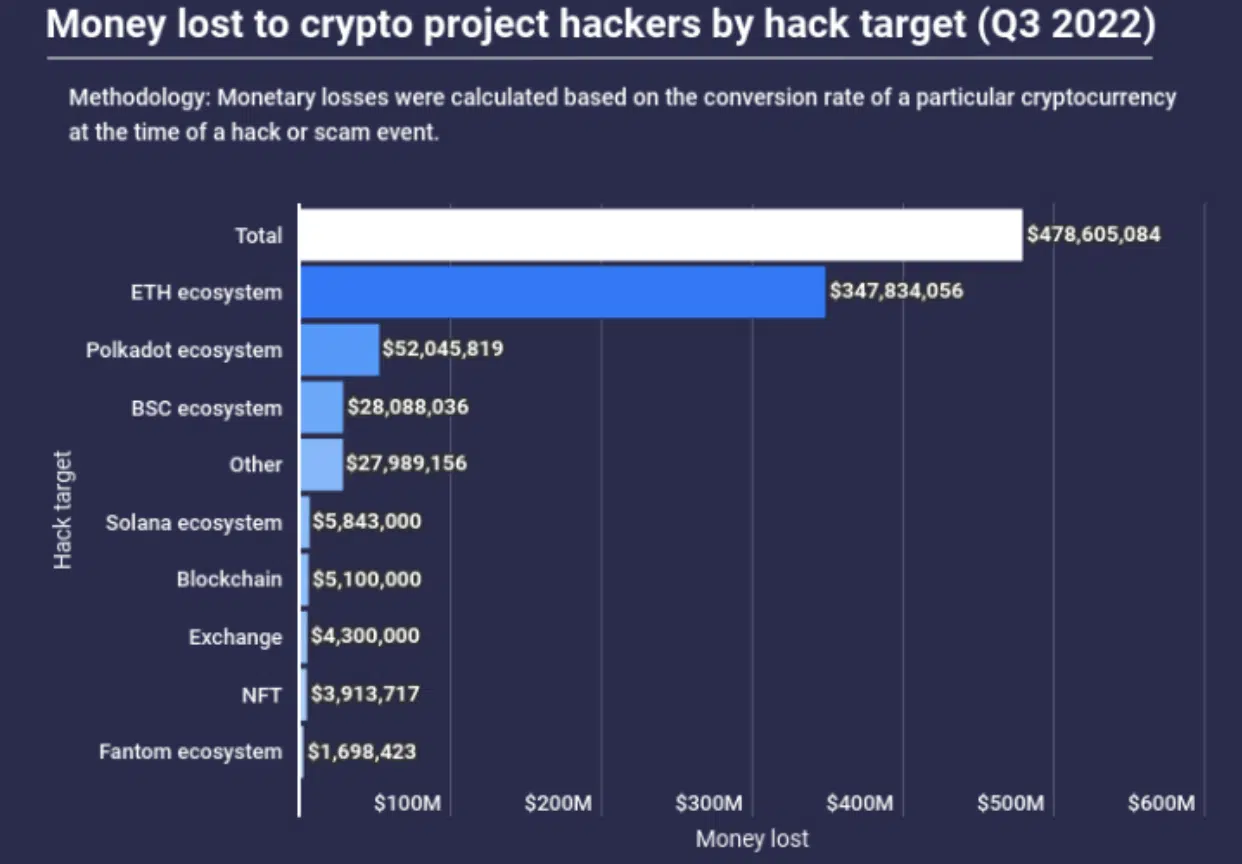
Source: Slowmist
It must be reiterated, however, that predictions aren’t set in stone and due caution should be taken by investors before investing in the market.
Investors remain concerned about the security of the Polkadot ecosystem. Slowmist, a blockchain security firm, recently revealed that over $52 million in cryptocurrency was hacked in the Polkadot ecosystem in the third quarter of 2022.
Polkadot (DOT) posted its weekly roundup earlier this week, which mentioned all the notable developments that happened in its ecosystem during the last seven days. The developments were not only confined to Polkadot, but also included updates for its parachains and other networks.
One factor that could impact the future of Polkadot is the emergence of new blockchain platforms that offer similar features and functionality. As the market becomes more crowded, it may be more difficult for Polkadot to stand out and attract new users.

